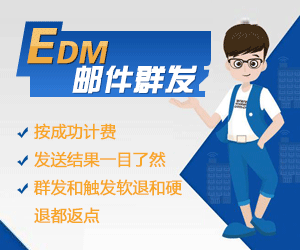javaweb前端向后端传值的方式有哪些
这篇文章主要介绍“javaweb前端向后端传值的方式有哪些”,在日常操作中,相信很多人在javaweb前端向后端传值的方式有哪些问题上存在疑惑,小编查阅了各式资料,整理出简单好用的操作方法,希望对大家解答”javaweb前端向后端传值的方式有哪些”的疑惑有所帮助!接下来,请跟着小编一起来学习吧!
一、javaweb中前端向后端传值的几种方式
1.查询字符串的方式
即在请求地址后拼接上请求参数,多个参数以&连接- 表单方式提交
2.第一种方式是在表单中直接提交,第二种方式是通过ajax方式,data属性是js对象或者json对象,不指明contentType默认就是以表单方式提交。
3.json字符串方式
后端以@RequestBody方式接受,以对象形式接受,可以和查询字符串混用,除了对象之外后端还可以接受查询字符串参数。
经测试,后端不加@RequestBody,json字符串传到后台就不能正确匹配对象。
二、javaweb后台接收前台参数的三种注解
@RequestParam
@PathVariable
@RequestBody
2.1 @RequestParam
@RequestParam:将请求参数绑定到你控制器的方法参数上(是springmvc中接收普通参数的注解)。接收的参数是来自HTTP请求体或请求url的参数串中。。
语法:@RequestParam(value=”参数名”,required=”true/false”,defaultValue=””)
value:为接收url的参数名(相当于key值)。
required:是否包含该参数,默认为true,表示该请求路径中必须包含该参数,如果不包含就报错。
defaultValue:默认参数值,如果设置了该值,required=true将失效,自动为false,如果没有传该参数,就使用默认值。
@RequestParam用来处理 Content-Type 为 application/x-www-form-urlencoded 编码的内容,Content-Type默认为该属性。
@RequestParam也可用于其它类型的请求,例如:POST、DELETE等请求。
代码如下:
1.get请求参数带在url中。
前端代码:
<button><a href="https://www.19jp.com">后端代码:
@RequestMapping(value = "paramGet",produces = "application/json;charset=utf-8")
@ResponseBody
public String paramGet(@RequestParam("name")String username,
@RequestParam("age")int age,
@RequestParam(value = "score",required = false)Float score){
return username+"今年"+age+"岁"+",考试得了"+score+"分!";
}2.post请求参数带在url或者请求体中
前端代码:
<button onclick="paramPost()">点我发送post请求</button>
<script type="text/javascript">
//post请求参数带在url中。
function paramPost() {
$.ajax({
type:"post",
//参数在url中,载荷是查询字符串,就是没有请求体
// url:"paramPost?name=jack&age=25",
url:"paramPost",
//参数在请求体中,js对象和json对象都可以提交,默认是提交表单数据
data:{name:"jack",
age:15
},
dataType:"json",
success: function(data){
console.log(data);
alert(data);
alert(data.sss);
}
});
}
</script>后端代码:
@RequestMapping(value = "paramPost",produces = "application/json;charset=utf-8",method = RequestMethod.POST)
@ResponseBody
public Map<String,String> paramPost(@RequestParam("name")String username,
@RequestParam("age")int age,
@RequestParam(value = "score",required = false)Float score){
Map<String,String> map = new HashMap<>();
String ss = username+"今年"+age+"岁"+",考试得了"+score+"分!";
map.put("sss",ss);
return map;
}3.直接以表单方式提交
前端代码:
<form action="<%=basePath%>annotation/paramPost" method="post">
姓名:<input type="text" name="name" required="required"><br>
年龄:<input type="text" name="age" required="required"><br>
分数:<input type="text" name="score"><br>
<input type="submit">
</form>后端代码:
@RequestMapping(value = "paramPost",produces = "application/json;charset=utf-8",method = RequestMethod.POST)
@ResponseBody
public Map<String,String> paramPost(@RequestParam("name")String username,
@RequestParam("age")int age,
@RequestParam(value = "score",required = false)Float score){
Map<String,String> map = new HashMap<>();
String ss = username+"今年"+age+"岁"+",考试得了"+score+"分!";
map.put("sss",ss);
return map;
}上面这种方式提交就是表单方式,它和通过ajax方式,data属性是js或者json对象,不指明contentType是一样的。
2.2 @PathVariable
Web应用中的URL通常不是一成不变的,例如微博两个不同用户的个人主页对应两个不同的URL:http://weibo.com/user1和http://weibo.com/user2。 我们不能对于每一个用户都编写一个被@RequestMapping注解的方法来处理其请求,也就是说,对于相同模式的URL(例如不同用户的主页,他们仅仅是URL中的某一部分不同, 为他们各自的用户名,我们说他们具有相同的模式)。
可以在@RequestMapping注解中用{ }来表明它的变量部分,例如:
@RequestMapping(value="/user/{username}")需要注意的是,在默认情况下,变量中不可以包含URL的分隔符/,例如路由不能匹配/user/Denny/Jon,即使你认为Denny/Jon是一个存在的用户名。
在路由中定义变量规则后,通常我们需要在处理方法(也就是@RequestMapping注解的方法)中获取这个URL的具体值,并根据这个值(例如用户名)做相应的操作, SpringMVC提供的@PathVariable可以帮助我们:
@RequestMapping(value="/user/{name}")
public String userProfile(@PathVariable(value="name") String username) {
return "user"+username;
}PathVariable加RequestParam的组合方式:
前端代码:
<button><a href="https://www.19jp.com">后端代码:
@RequestMapping(value = "pathTest/{name}/{age}",produces = "application/json;charset=utf-8")
@ResponseBody
public Map<String,String> pathTest(@PathVariable("name")String username,
@PathVariable("age")int age,
@RequestParam(value = "score",required = false)Float score){
Map<String,String> map = new HashMap<>();
String ss = username+"今年"+age+"岁"+",考试得了"+score+"分!";
map.put("sss",ss);
return map;
}2.3 @RequestBody
@RequestBody主要用来接收前端传递给后端的json字符串中的数据的(请求体中的数据的);而最常用的使用请求体传参的无疑是POST请求了, 所以使用@RequestBody接收数据时,一般都用POST方式进行提交。在后端的同一个接收方法里,@RequestBody与@RequestParam()可以同时使用, @RequestBody最多只能有一个,而@RequestParam()可以有多个。
注:一个请求,只有一个RequestBody;一个请求,可以有多个RequestParam。
前端代码:
<button onclick="requestBodyTest()">点我测试requestbody</button>
<script type="text/javascript">
//测试requestbody
function requestBodyTest() {
let json = {"uName":"david","phone":13887898998};
alert(typeof json);
$.ajax({
type:"post",
url:"<%=basePath%>annotation/requestBodyTest?score=17.8",
//json字符串
data:JSON.stringify(json),
//指定发送数据的格式
contentType:"application/json", //是这种格式,不是json/application
//指定返回数据的格式
dataType:"json",
success: function(data){
console.log(typeof data);
console.log(data);
alert(typeof data);
alert(data.sss);
}
});
}
</script>后端代码:
@RequestMapping(value = "requestBodyTest",produces = "application/json;charset=utf-8",method = RequestMethod.POST)
@ResponseBody
public Map<String,String> requestBodyTest(@RequestBody User user,
@RequestParam(value = "score",required = false)Float score){
Map<String,String> map = new HashMap<>();
String ss = user.getuName()+"今年"+"考试得了"+score+"分!";
map.put("sss",ss);
return map;
}相关内容
这些是最新的
热门排行
- THINKPHP5+GatewayWorker+Workerman 开发在线客服系统
- 在手机浏览器网页中点击链接跳转到微信界面的方法
- 尊云网站目录系统 ThinkPHP5网站分类目录程序 v2.2.221011
- CentOS 7安装shadowsock(一键安装脚本)
- AdminTemplate 基于LayUI 2.4.5实现的网站后台管理模板
- 用NW.js(node-webkit)开发多平台的桌面客户端
- PHP生成随机昵称/用户名
- THINKPHP5网站分类目录程序 尊云网站目录系统
- 织梦(DEDECMS)微信支付接口 微信插件
- 基于LayUI开发的 网站后台管理模板 BeginnerAdmin
- 响应式后台网站模板 - AMA.ADMIN
- layuiAdmin后台管理模板 Iframe版
- LayUI 1.0.9 升级 至 LayUI 2.1.4 方法
- 简洁清爽的会员中心模板
- jQuery幸运大转盘抽奖活动代码



